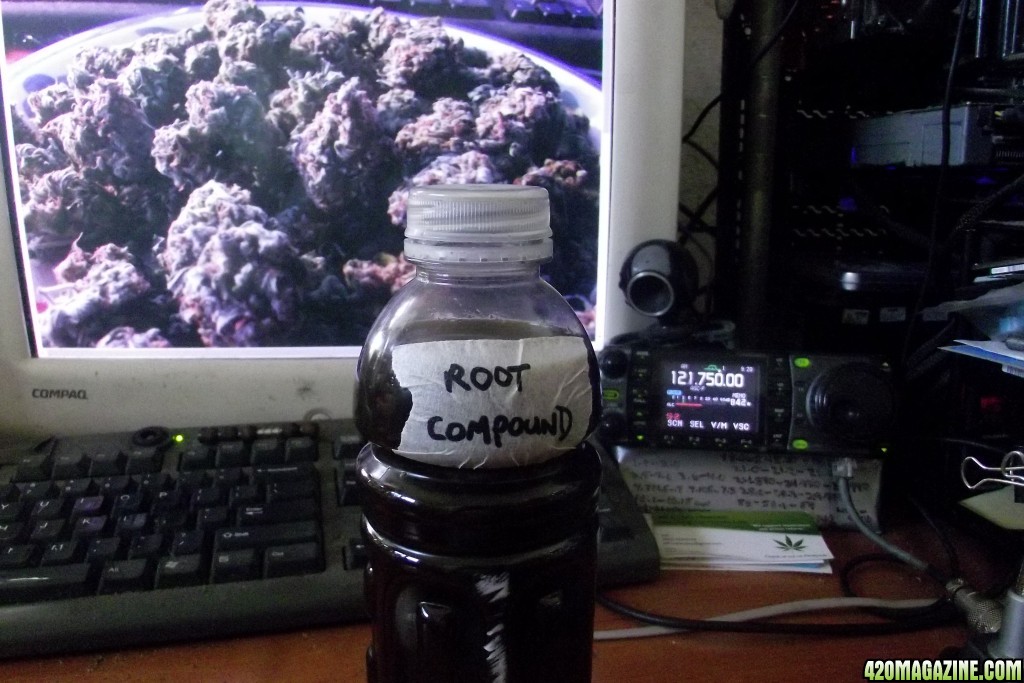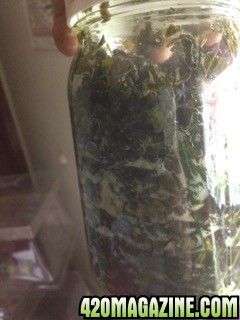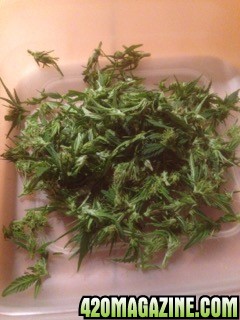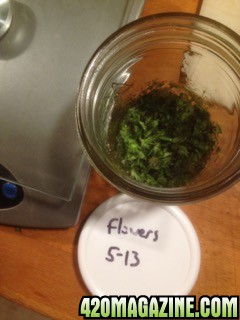- Thread starter
- #21
Emilya Green
Well-Known Member
Today, out of need, I processed the dandelion root extract. I will soon be transplanting all of my vegging plants into their final 7 gallon containers, and upon the initial watering, I plan on using some of this in each gallon of water given, along with a strong fish emulsion fertilizer, in order to strongly establish all of the plants in the larger containers.
Here is what the extract looks like in the bottle:

All I did was to filter/funnel all of the liquid out of the milk jug, mostly filling this little water bottle. I added about 3 tablespoons of molasses to bring it up to the top and to feed the microlife so as to keep working on the solids suspended in the liquid. The bottle has been capped lightly to allow air to escape and it will continue to be burped now and then until all the bubbling stops. I will be using 4 tablespoons per gallon of this mix any time I feel a need to enhance the root growth. We should start getting an idea after a grow or two if this stuff really works... until then, it is up to your's truly, to do this experiment for the good of all. Wouldn't it be grand to be able to get away from the need to buy all those expensive root growth formulas? We shall learn together.
Experimenter Emmie
Here is what the extract looks like in the bottle:
All I did was to filter/funnel all of the liquid out of the milk jug, mostly filling this little water bottle. I added about 3 tablespoons of molasses to bring it up to the top and to feed the microlife so as to keep working on the solids suspended in the liquid. The bottle has been capped lightly to allow air to escape and it will continue to be burped now and then until all the bubbling stops. I will be using 4 tablespoons per gallon of this mix any time I feel a need to enhance the root growth. We should start getting an idea after a grow or two if this stuff really works... until then, it is up to your's truly, to do this experiment for the good of all. Wouldn't it be grand to be able to get away from the need to buy all those expensive root growth formulas? We shall learn together.
Experimenter Emmie



 Brilliant! Reps for the last sentence especially.
Brilliant! Reps for the last sentence especially. 








